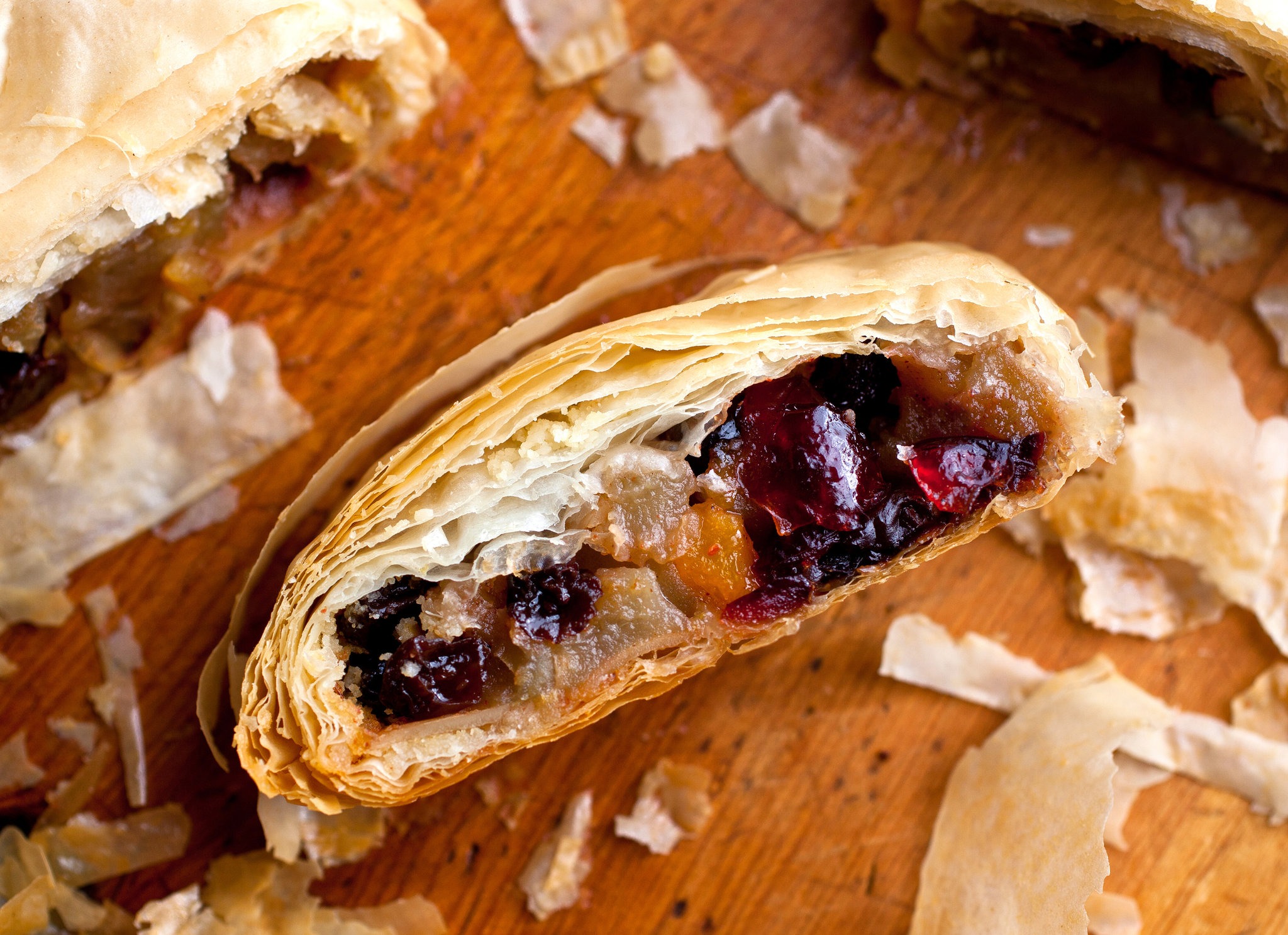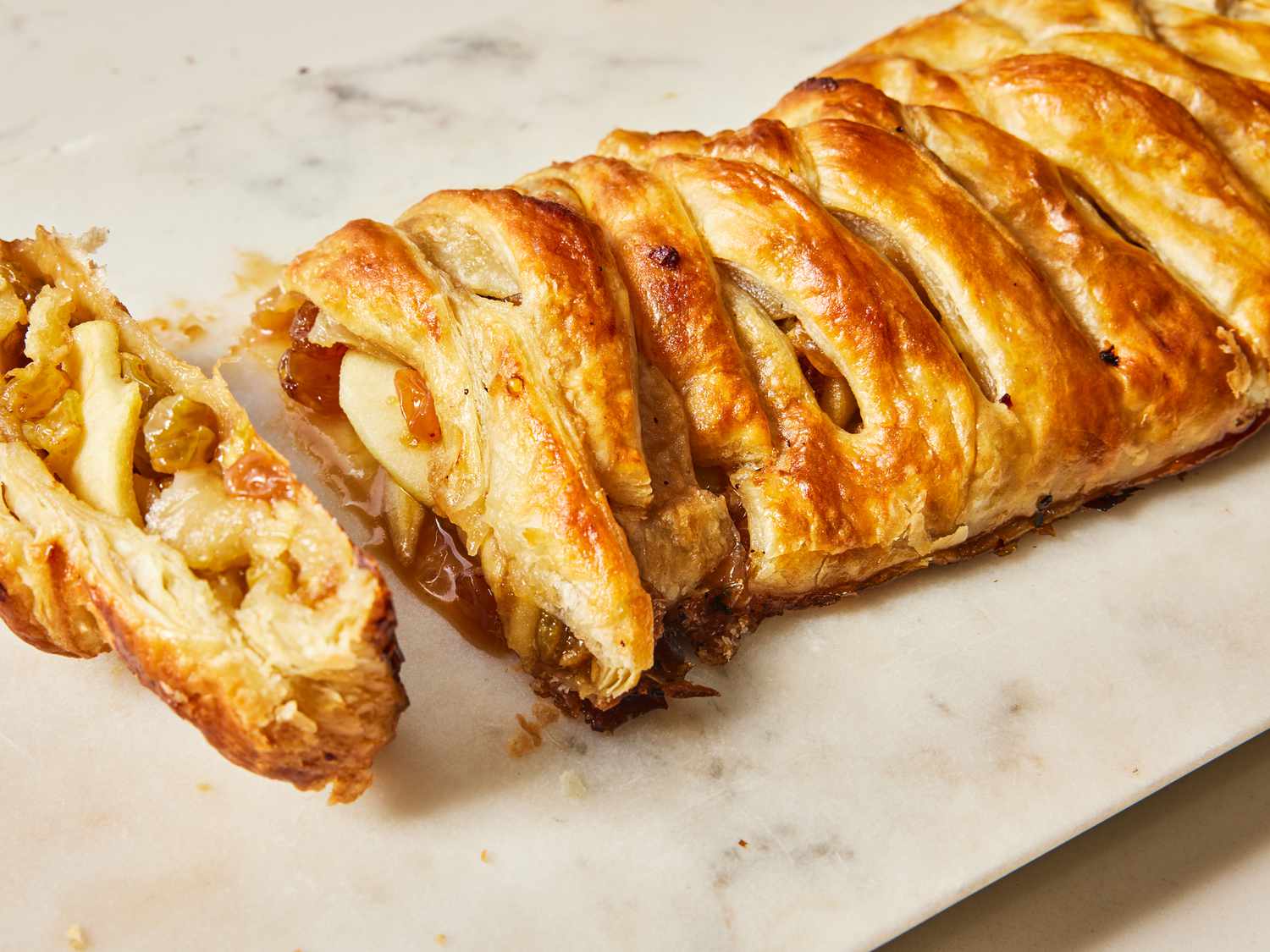Strudel, with its delicate layers of pastry and rich fillings, is a beloved dessert that has captured the hearts and taste buds of many around the world. Originating from Central Europe, this pastry has a rich history, diverse variations, and significant cultural importance. This article delves into the origins of strudel, its traditional and modern variations, and its role in culinary traditions.
The Origins of Strudel

Strudel’s origins can be traced back to the Austro-Hungarian Empire, which spanned much of Central Europe. The word “strudel” comes from the German word for “whirlpool” or “eddy,” which aptly describes the pastry’s characteristic swirled appearance. The concept of strudel, however, likely evolved from similar Middle Eastern pastries, such as baklava, brought to Europe through the Ottoman Empire.
The earliest known strudel recipe dates back to 1696 and is housed in a handwritten cookbook in the Vienna City Library. This early version was known as “Millirahmstrudel,” a milk-cream strudel, which highlighted the use of dairy products—a staple in Austrian cuisine.
Traditional Strudel Varieties
Strudel can be made with a variety of fillings, both sweet and savory. The most famous type of strudel is undoubtedly the Apfelstrudel (apple strudel), which has become synonymous with Austrian cuisine. Other traditional varieties include Topfenstrudel (cheese strudel) and Nussstrudel (nut strudel). Each type of strudel showcases the versatility of this pastry.
Apfelstrudel (Apple Strudel)
Apple strudel is the quintessential strudel variety, featuring a filling of tart apples, sugar, cinnamon, raisins, and breadcrumbs, often enhanced with a splash of rum or lemon zest. The filling is enveloped in a thin, elastic dough that is rolled and stretched to create multiple delicate layers.
The dough for apple strudel is made from flour, water, oil, and a bit of vinegar, kneaded until smooth and elastic. The dough is then rested and carefully stretched until it is thin enough to read through. This process requires skill and patience, as the dough must be thin yet strong enough to hold the filling without tearing.
Once filled, the dough is rolled into a log, brushed with melted butter, and baked until golden brown. The result is a crisp, flaky pastry with a warm, spiced apple filling that is often served with a dusting of powdered sugar and a dollop of whipped cream or vanilla sauce.
Topfenstrudel (Cheese Strudel)

Topfenstrudel is another popular variety, featuring a filling of soft cheese, such as quark or ricotta, mixed with sugar, vanilla, lemon zest, and sometimes raisins or a bit of cream. This strudel is less sweet than apple strudel and has a creamy, tangy filling that pairs beautifully with the light, flaky pastry.
The preparation of topfenstrudel follows a similar process to apple strudel, with the dough being stretched and filled, then rolled and baked. It is often enjoyed warm, with a sprinkling of powdered sugar or a light drizzle of fruit sauce.
Nussstrudel (Nut Strudel)
Nussstrudel features a rich filling of ground nuts, typically walnuts or hazelnuts, mixed with sugar, cinnamon, and sometimes a bit of milk or cream to create a moist, flavorful filling. The nutty filling provides a delightful contrast to the delicate pastry layers.
Like other strudels, nussstrudel is made by stretching the dough, filling it with the nut mixture, and rolling it up before baking. It is a popular choice for those who enjoy the robust flavors of nuts and spices.
Modern Strudel Variations
While traditional strudel varieties remain popular, modern bakers have embraced creativity, experimenting with new fillings and flavors. Some contemporary variations include:
Savory Strudels
Savory strudels have become increasingly popular, showcasing fillings such as spinach and feta, mushrooms and cream, or minced meat and vegetables. These savory versions make excellent appetizers, main dishes, or snacks.
Savory strudels follow the same basic preparation method as sweet strudels, with the dough being stretched, filled, and baked. The savory fillings often include ingredients like cheese, herbs, and spices, adding depth and complexity to the dish.
Seasonal Fruit Strudels
Modern bakers often incorporate seasonal fruits into their strudels, such as berries, cherries, or plums. These variations add a fresh, vibrant twist to the classic dessert, highlighting the natural sweetness and tartness of the fruits.
Seasonal fruit strudels are prepared similarly to traditional apple strudel, with the fruit filling being mixed with sugar, spices, and sometimes a thickener like cornstarch or breadcrumbs to absorb excess moisture. The result is a juicy, flavorful filling encased in crispy pastry layers.
Chocolate and Nutella Strudels
For those with a sweet tooth, chocolate and Nutella strudels have become popular modern variations. These strudels feature a rich, indulgent filling of chocolate or hazelnut spread, often combined with nuts or fruit for added texture and flavor.
Chocolate and Nutella strudels are made by spreading the filling over the stretched dough, rolling it up, and baking until golden and flaky. The warm, melted chocolate or hazelnut spread creates a decadent dessert that is sure to satisfy any chocolate lover.
Cultural Significance

Strudel holds a special place in the culinary traditions of Central Europe, particularly in Austria, Hungary, and Germany. It is often enjoyed during holidays, family gatherings, and special occasions, symbolizing warmth, comfort, and tradition.
Austria
In Austria, strudel is a cultural icon, often associated with Viennese coffeehouse culture. Apple strudel, in particular, is a staple in Austrian bakeries and cafes, where it is typically enjoyed with a cup of coffee or tea. The art of making strudel is passed down through generations, with families preserving their unique recipes and techniques.
Hungary
In Hungary, strudel is known as “rétes” and is a beloved dessert with a long history. Hungarian strudels often feature fillings such as sweet cottage cheese, poppy seeds, and various fruits. Strudel-making is considered an important culinary skill, and many traditional Hungarian recipes emphasize the importance of homemade, hand-stretched dough.
Germany
In Germany, strudel is a popular pastry, especially in regions like Bavaria. German strudels often feature fillings such as apples, cherries, and quark cheese. Strudel is commonly enjoyed during festive occasions, such as Christmas and Easter, and is a beloved treat in German households.
Strudel in Contemporary Cuisine
Today, strudel continues to be a popular and versatile dessert enjoyed by people around the world. Its adaptability allows for endless variations, making it a favorite among home bakers and professional chefs alike.
Strudel in Restaurants
Many fine dining restaurants and bakeries offer gourmet mancingduit versions of strudel, featuring high-quality ingredients and innovative flavor combinations. Chefs often put their unique spin on the classic pastry, incorporating elements of modern cuisine while preserving its traditional essence.
Strudel in Home Baking
Home bakers continue to embrace strudel as a rewarding and enjoyable baking project. The process of making strudel from scratch, particularly the dough stretching, is seen as a testament to one’s baking skills. Homemade strudel is often shared with family and friends, embodying the spirit of hospitality and tradition.
Conclusion
Strudel is more than just a pastry; it is a culinary masterpiece that reflects the rich cultural heritage and traditions of Central Europe. From its historical roots to its modern variations, strudel continues to delight and inspire bakers and dessert lovers around the world. Whether enjoyed as a sweet treat or a savory dish, strudel remains a timeless symbol of the art of baking, celebrating the creativity and passion of those who make and enjoy it.
Read More Article About “TEH DAUN SIRSAK: MANFAAT KESEHATAN DARI ALAM“





